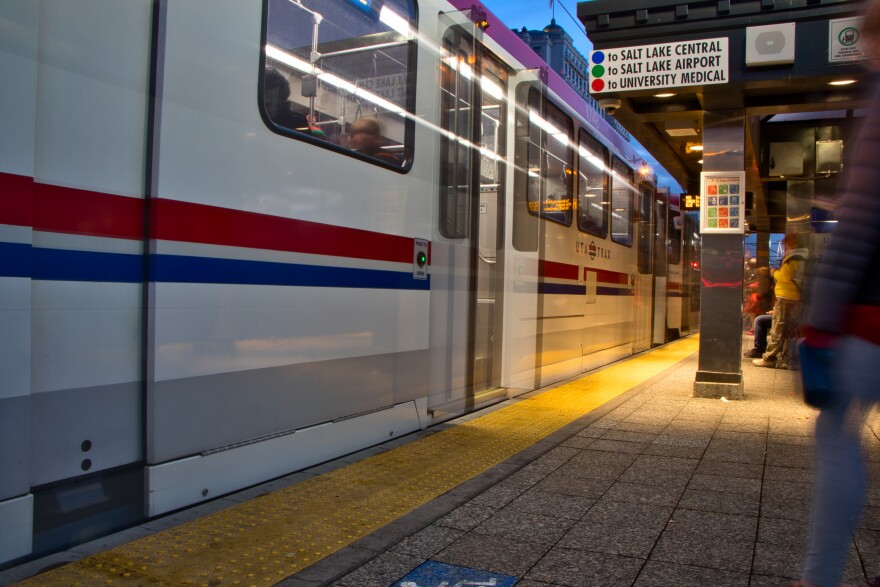Public transportation ridership in Utah has plummeted since the coronavirus pandemic began.
In April, the state’s public transit system averaged about 1.2 million riders, which is down 68% from the year before. Passenger revenue has fallen by 69%.
The Utah Transit Authority has reduced service and implemented a number of safety measures — including providing free face masks to riders and allowing them to board without touching doors or buttons. But like many others around the country, Utah’s transit system is facing questions about if and when people will feel safe riding again and what kind of financial support will be needed to keep long term plans alive.
“I think there's no way around it — [UTA is] going to be licking their wounds for a while,” said Ted Knowlton, deputy director of the Wasatch Front Regional Council.
There are major upsides for getting the system not only back to normal, but better than it was, he said. Getting people out of cars can not only reduce air pollution and traffic, but save them money on commuting, which could have ripple effects throughout the state’s economy, he said.
James Larson, a spokesman with the transit authority, said the pandemic has put the agency in a holding pattern. Fewer riders has meant they’ve been able to get some much-needed repairs done, but it’s also delaying some long term plans. Construction, for example, on a $100 million bus project in Ogden that has been in the works for several years is now being pushed back a month.
“Everyone’s just being really cautious right now,” Larson said. “Looking at data and trends and trying to figure out the best course of action that we need to take.”
Larson said the plan going forward is to keep an eye on local health orders and continue analyzing ridership data, bringing service back slowly based on how many people are using it.
The agency is also surveying customers and employees about how people are using public transportation and what kinds of safety precautions they’re taking.
“We’re trying to be budget-conscious as we move back into regular service,” he said. “The hard thing is nobody knows people’s comfort level as we move from orange to yellow.”
Utah transit is getting close to $220 million from the federal government to cover COVID-related losses, which Larson said will mostly be used to subsidize overall service. But it’s not clear yet how big a hit the agency’s budget will take because of falling sales tax revenue.
Knowlton, with the regional council, said that will be a big question going forward. And because the pandemic could affect everything from where people choose to live and work to how far people travel and how much they’re able to spend on commuting, transit officials will need multiple strategies going forward to keep the system viable.
“One of the long term lessons learned from COVID-19 is that sometimes you get these massive curve balls thrown at you,” he said. “We're seeing massive shifts right now — like a shift in people telecommuting and shopping online. All of these things suggest to us that we've got to look at a handful of different likely futures and not just the most likely scenario.”
Jon Reed is a reporter for KUER. Follow him on Twitter @reedathonjon


